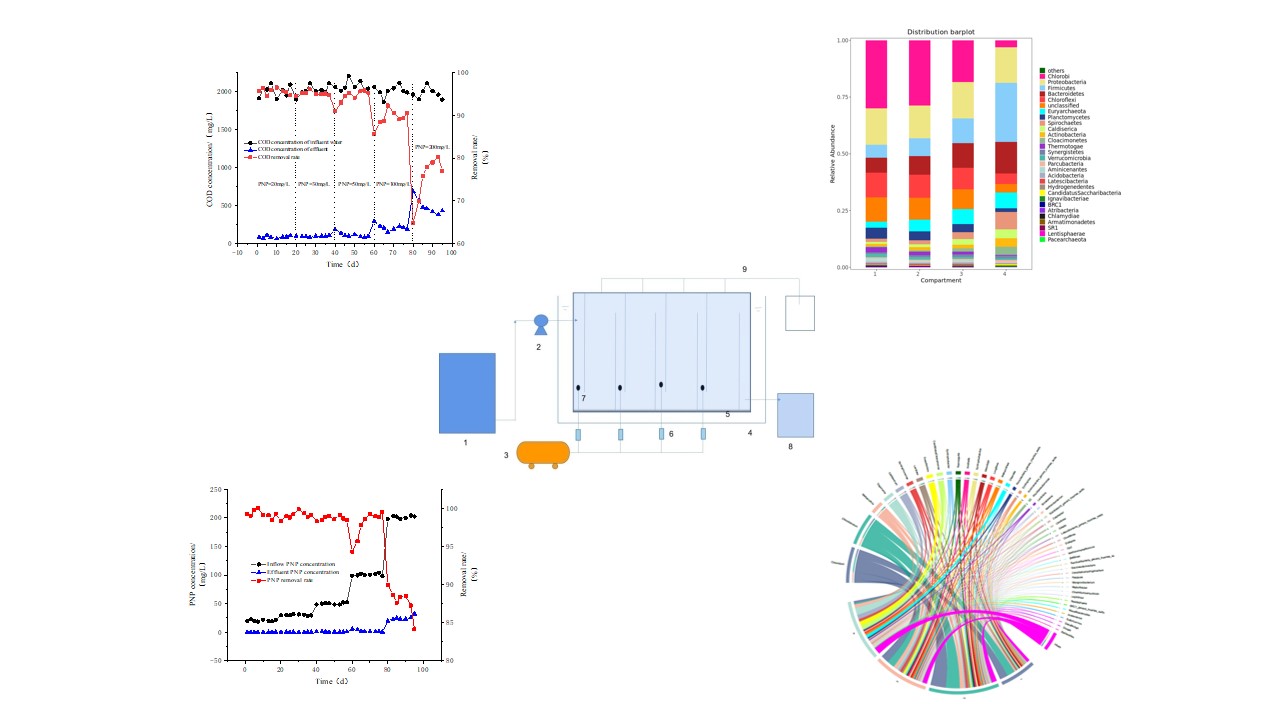
Using a baffle reactor to degrade nitrophenol wastewater, with p-nitrophenol as the target pollutant, investigate the effects of nitrophenol concentration, external carbon source concentration, hydraulic retention time, and dissolved oxygen changes on the degradation of p-nitrophenol in the micro oxygen baffle reactor. The results showed that when the HRT of the micro oxygen baffle reactor was maintained for 24 hours and the PNP concentration was below 100 mg/L, the COD removal rate remained stable at 93.68%. After the HRT was reduced, the contribution rate of the subsequent compartment to the degradation of p-nitrophenol and COD removal increased, becoming a beneficial supplement for the system to cope with load shocks. When the DO concentration is between 0.3-0.5mg/L, the removal rate of COD is the highest, indicating that micro aeration is beneficial for removing pollutants. Through high-throughput sequencing analysis, it was found that the microbial community composition in each compartment of the reactor was high. The species abundance in the first compartment and the third compartment was increased. The microbial groups in the reactor mainly included Bacteroidetes, Firmicutes, Proteobacteria, Spirochaetes, and Actinobacteria.
Total file downloads: 14